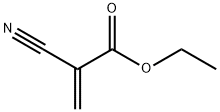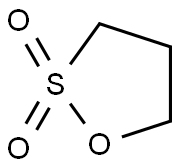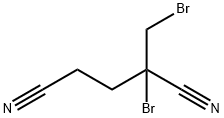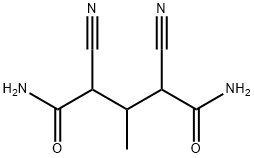Glutaronitrile
Synonym(s):1,3-Dicyanopropane
- CAS NO.:544-13-8
- Empirical Formula: C5H6N2
- Molecular Weight: 94.11
- MDL number: MFCD00001970
- EINECS: 208-861-6
- SAFETY DATA SHEET (SDS)
- Update Date: 2025-01-27 09:38:02

What is Glutaronitrile?
Chemical properties
Clear colorless to yellow liquid
The Uses of Glutaronitrile
Glutaronitrile can be used as:
- An electrolyte additive in high energy/power Li-ion batteries.
- A glutarate ligand source to prepare zinc glutarate (ZnGA) by reacting with zinc perchlorate hexahydrate.
- A reactant to synthesize pentanedithioamide by reacting with Lawesson′s reagent in the presence of boron trifluoride etherate (BF3.OEt2).
The Uses of Glutaronitrile
Chemical intermediate
Safety Profile
Poison by subcutaneous route. Moderately toxic by ingestion. When heated to decomposition it emits very toxic fumes of NOx and CN-. See also NITRILES.
Properties of Glutaronitrile
| Melting point: | −29 °C(lit.) |
| Boiling point: | 285-287 °C(lit.) |
| Density | 0.995 g/mL at 25 °C(lit.) |
| refractive index | n |
| Flash point: | >230 °F |
| storage temp. | Store below +30°C. |
| solubility | H2O: soluble |
| form | clear liquid |
| color | Colorless to Light yellow |
| Water Solubility | soluble |
| Sensitive | Hygroscopic |
| Merck | 14,4474 |
| BRN | 1738385 |
| CAS DataBase Reference | 544-13-8(CAS DataBase Reference) |
| NIST Chemistry Reference | Glutaronitrile(544-13-8) |
| EPA Substance Registry System | Pentanedinitrile (544-13-8) |
Safety information for Glutaronitrile
| Signal word | Danger |
| Pictogram(s) |
 Skull and Crossbones Acute Toxicity GHS06 |
| GHS Hazard Statements |
H301:Acute toxicity,oral |
Computed Descriptors for Glutaronitrile
New Products
Methyl (R)-1-Boc-4,4-difluoropyrrolidine-2-carboxylate 2,2-Difluoropropylamine hydrochloride tert-butyl 3-bromoazetidine-1-carboxylate (R)-1-Boc-3-hydroxypyrrolidine DIFLUOROACETIC ANHYDRIDE 2,2-Difluoropropionic acid Diallylamine, 99% Calcium hydroxide, 95% Aluminum oxide, basic 2-Bromophenylacetonitrile, 97% L-tert-Leucine,97% N-Hydroxy-2-methylpropanimidamide 4-(3,4-Dichlorophenyl)-3,4-Dihydro-N-Methyl-1-(2H)-Naphthalenimine (Schiff Base) 2-AMINO-3,5-DIBROMO BENZALDEHYDE [ADBA] L-Glutamic Acid Dimethyl Ester Hcl 10-Methoxy-5H-dibenz[b,f]azepine 5-Cyanophthalide N, N-Carbonyldiimidazole (CDI) Dibenzoyl Peroxide Titanium Dioxide 2-(Methylthio) Benzonitrile Sodium Acetate Anhydrous Allopurinol 1,5-DibromopentaneRelated products of tetrahydrofuran








You may like
-
 Glutaronitrile CAS 544-13-8View Details
Glutaronitrile CAS 544-13-8View Details
544-13-8 -
 Glutaronitrile CAS 544-13-8View Details
Glutaronitrile CAS 544-13-8View Details
544-13-8 -
 Glutaronitrile 98% (GC) CAS 544-13-8View Details
Glutaronitrile 98% (GC) CAS 544-13-8View Details
544-13-8 -
 Glutaronitrile 98% CAS 544-13-8View Details
Glutaronitrile 98% CAS 544-13-8View Details
544-13-8 -
 Ethyl-2-Chloroacetoacetate 609-15-4View Details
Ethyl-2-Chloroacetoacetate 609-15-4View Details
609-15-4 -
 609-15-4View Details
609-15-4View Details
609-15-4 -
![1-(6-Methylpyridin-3-Yl)-2-[4-(Methylsulfonyl)Phenyl]Ethanone [Ketosulfone] 99%](https://img.chemicalbook.in//Content/image/CP5.jpg) 1-(6-Methylpyridin-3-Yl)-2-[4-(Methylsulfonyl)Phenyl]Ethanone [Ketosulfone] 99%View Details
1-(6-Methylpyridin-3-Yl)-2-[4-(Methylsulfonyl)Phenyl]Ethanone [Ketosulfone] 99%View Details
221615-75-4 -
 27143-07-3View Details
27143-07-3View Details
27143-07-3
Statement: All products displayed on this website are only used for non medical purposes such as industrial applications or scientific research, and cannot be used for clinical diagnosis or treatment of humans or animals. They are not medicinal or edible.
